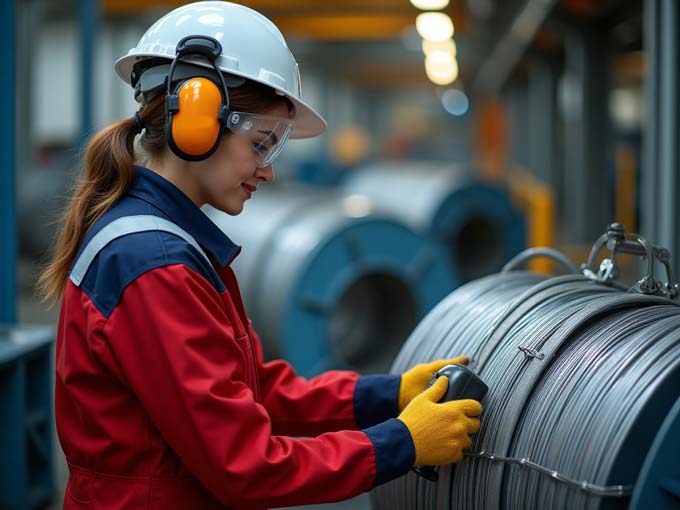Hydro plans to invest NOK 15 billion in the construction of a new wire rod casthouse at its aluminum smelter in Karmøy, Norway. This is the company’s largest investment in Norway in ten years.
“This investment will expand the capacity of wire rod to supply our customers with low-carbon solutions needed to develop and expand Europe’s most critical infrastructure,” said Eivind Kallevik, president and CEO of Hydro. “This demonstrates that a productive aluminium industry has good growth opportunities in Norway.”
The Karmøy is one of Europe’s largest aluminum smelters. The smelter houses a research and development center, as well as Hydro’s pilot plant for smelting technology, which is expected to be one of the most climate and energy-efficient aluminum production technologies in the world. The site has two casthouses — one for extrusion ingot and one for wire rod for high-voltage cables. The plant has a total production of around 270, 000 tonnes of primary aluminum and 220,000 tonnes of casthouse products annually.
The new wire rod casthouse in Karmøy will have a capacity of 110,000 tonnes per year, providing increased product flexibility. This is important in a volatile aluminum market, in which the automotive and building system sectors are particularly challenging.
While a turbulent global landscape and lower industrial activity has reduced aluminum demand over the past year, Hydro has sold more low-carbon aluminum in recent years. In the energy transition, properties such as weight, durability and recyclability give aluminum a competitive advantage.
“We see in our own sales figures an increasing awareness in the market that future renewable energy must be transported with renewable materials,” noted Kallevik. “Despite generally weaker demand in 2024, Hydro sold more low-carbon and recycled aluminium last year than in both 2023 and our record year in 2022.”
An aluminum conductor with the same electrical conductivity as a copper conductor weighs approximately 50% less, or half the weight, of a copper conductor. Aluminum is, therefore, a key component in the European energy transition. With a new wire rod casthouse, Hydro can produce more aluminum wire for a rapidly growing market.
“Europe’s energy transition is about one thing, more renewable power production, and the power produced must be transported over long distances. Aluminium is crucial for transporting electricity to where it is needed. By expanding the capacity to deliver low-carbon aluminum from Norway to the EU, we help ensure that the infrastructure, the very backbone of the future energy system, supports both Europe’s security and climate policy goals,” said Kallevik. “Our ambition is for Hydro to play a key role as a stable, reliable supplier of the aluminium solutions Europe needs to succeed.”
The project is pending final build decision, which will be made in the fourth quarter of 2025. The new wire rod facility is expected to start production in 2028.







